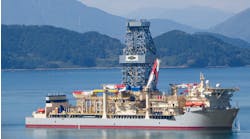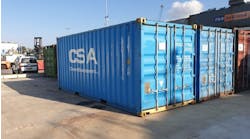ONS 2012: Statoil after 60% increase in offshore oil recovery
Offshore staff
STAVANGER, Norway –Statoil is looking to increase average oil recovery from its fields offshore Norway to 60%, according to senior figures speaking at ONS today.
Last year the company managed to raise the bar by 1% to 50%, equivalent to an extra 327 MMbbl of oil. For many of the fields, the original target in the plan for development and operation had been 30% recovery, said Oystein Michelsen, executive VP for Development and Production Norway. Eking out a further 10% will take time, he conceded.
"We haven't set a schedule. It will depend partly on oil prices, because of the costs involved in extracting these reserves, and on our success in developing new technologies."
Statoil has 3,000 staff working on 300 improved oil recovery projects, said Siri Espedal Kinden, senior VP for Technology Excellence. Among the new ideas the company is pursuing are use of permanent cables for 4D seismic, and finding ways to prise out immobile oil that remains trapped during water flood or bypassed by injection fluids.
"This could be done either by enhanced oil recovery - adding something - or extracting something," she said.
She cited use of polymer flooding to increase the sweep of injection on the Dalia field offshore Angola, where the company is a partner. That technique is under consideration for Statoil's Mariner and Heidrun projects in the North Sea and on Peregrino offshore Brazil.
The Norwegian Petroleum Directorate has awarded Statoil its 2012 prize for improved recovery for work on gas injection on the Oseberg field in the North Sea. This has delivered an extra 400-500 MMbbl of oil to date, Espedal said.
"The process started with the TOGI remotely controlled subsea project in 1991, with injection gas supplied directly from the Troll field."
Supplementary measures have included use of 4D seismic to improve understanding of the Oseberg main field reservoir, platform topsides modifications to increase gas capacity, drilling of multilateral and branch wells, and tie-ins of subsea satellites.
All these measures have lifted recovery from Oseberg to 70%, she added, and should keep the field in production through 2035.
8/29/2012


